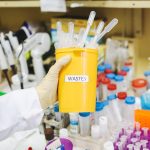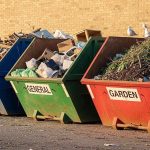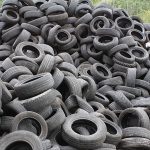Common Cardboard Recycling Mistakes to Avoid
Recycling is a vital part of maintaining a sustainable environment, and cardboard recycling plays a significant role in reducing waste and conserving resources. However, some individuals and businesses still make common cardboard recycling mistakes that can hamper the process. At the Adelaide Waste and Recycling Centre, we believe that education is key to improving recycling habits, and this article outlines the most common cardboard recycling mistakes, and provides helpful solutions to avoid them, ensuring that your recycling efforts are as effective as possible.
Recycling Contamination
One of the most significant issues related to cardboard recycling is contamination. When recycling, cardboard should be free from food residues, grease, and other waste materials, as when contamination occurs, it can cause entire batches of recyclables to be rejected, making the process less efficient. One example is pizza boxes that contain grease stains or food remnants, which makes them unsuitable for recycling.
Solution: Always ensure that your cardboard is clean before placing it in the recycling bin. If the cardboard contains food residues, such as pizza boxes or takeout containers, consider tearing off the soiled sections and disposing of them separately in the general waste. Only recycle the parts that are clean and free from contamination.
Not Removing Plastic Tape and Other Non-Recyclable Materials
Many people make the mistake of leaving plastic tape, labels, or other non-recyclable materials on their cardboard. This is a common issue with shipping boxes, where the tape is often left on when the box is discarded. Plastic and other non-paper materials can disrupt the recycling process and lower the quality of the recycled product.
Solution: Before recycling your cardboard, take the time to remove any plastic tape, labels, or other non-paper items. This simple step can improve the efficiency of the recycling process and help prevent contamination. If you’re unsure whether a material is recyclable, it’s always best to err on the side of caution and remove it.
Recycling Cardboard with Coatings or Laminates
Cardboard that has a plastic coating or laminate, such as some types of packaging or food containers, should not be recycled. These materials can be difficult to process and may cause issues with the quality of the recycling. While cardboard without coatings is widely accepted in recycling programmes, items with a plastic coating are considered non-recyclable.
Solution: Check whether your cardboard has a plastic coating or laminate before placing it in the recycling bin. If it does, dispose of it in the general waste. You can also look for information on the packaging, as many products now include recycling instructions to help you make the right choice.
Putting Cardboard in the Wrong Bin
Another common recycling mistake is placing cardboard in the wrong recycling bin at a recycling drop-off location. Not all recycling bins are suitable for cardboard, and some locations have specific bins for cardboard, paper, and glass. Incorrect recycling not only wastes resources but can also cause contamination in the recycling stream, making it more difficult to process materials.
Solution: Check signage to ensure that you are using the correct bin for cardboard recycling. If you’re unsure, seek clarity. By properly sorting your materials, you can help streamline the recycling process and contribute to more effective waste management.
Not Flattening Cardboard Boxes
A simple recycling measure that many people make do not undertake is flattening their cardboard boxes. Large, bulky boxes can take up a significant amount of space in a recycling bin, reducing the room available for other recyclables, and making it difficult for collection services like ours to process the materials efficiently. Additionally, unflattened boxes can lead to contamination if they are exposed to environmental factors.
Solution: Always flatten your cardboard boxes before placing them in the recycling bin. This not only saves space but also helps reduce the risk of contamination. Flattening boxes is a quick and easy task that can have a significant impact on the efficiency of recycling efforts.
Cardboard Containing Hazardous Materials
Cardboard that has been exposed to hazardous substances, such as chemicals or paints, is not suitable for recycling. Additionally, this type of cardboard can pose a danger to workers in recycling facilities and may contaminate the entire recycling batch.
Solution: If you have cardboard that has come into contact with hazardous materials, make sure to dispose of it properly according to waste management guidelines. For example, some materials may need to be taken to a dedicated hazardous waste disposal site.
Common Cardboard Recycling Mistakes – In Conclusion
Cardboard recycling is an easy yet essential process that contributes to a more sustainable future. By avoiding common cardboard recycling mistakes, such as contamination, incorrect sorting, or failure to flatten boxes, you can ensure that your efforts make a meaningful impact. Remember to follow recycling guidelines and stay informed about the latest recycling practices.
Get In Touch With Us
At the Adelaide Waste and Recycling Centre, we are committed to helping the South Australian community recycle effectively. If your business needs assistance with its recycling don’t hesitate to get in touch with us, on telephone 08 8295 5077 or via the contact form on our website. Together, we can reduce waste and work towards a cleaner, more sustainable environment.
Adelaide Waste and Recycling Centre
Our friendly operators are available at the AWRC if you need to clarify any further information.


